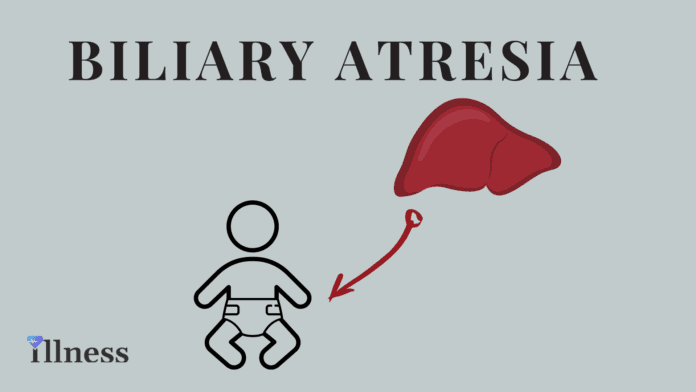Overview
Biliary Atresia is a blockage in the tubes (ducts) that carry a liquid called bile from the liver to the gallbladder. Newborn Jaundice – Biliary Atresia is synonymous with Biliary Atresia.
Commonly Associated With
Jaundice newborns – biliary atresia; Newborn jaundice – biliary atresia; Extrahepatic ductopenia; Progressive obliterative cholangiopathy
Cause
Biliary atresia occurs when the bile ducts inside or outside the liver are abnormally narrow, blocked, or absent. The bile ducts carry a digestive fluid from the liver to the small bowel to break down fats and to filter out waste from the body.
The cause of the disease is not clear. It may be due to:
- Viral infection after birth
- Exposure to toxic substances
- Multiple genetic factors
- Perinatal injury
- Some medicines such as carbamazepine
- It more commonly affects people of East Asian and African-American descent.
- The bile ducts help remove waste from the liver and carry salts that help the small intestine break down (digest) fat.
- In babies with biliary atresia, bile flow from the liver to the gallbladder is blocked. This can lead to liver damage and cirrhosis of the liver, which can be deadly.
Symptoms
Symptoms usually start to occur between 2 to 8 weeks. Jaundice (a yellow color to the skin and mucus membranes) develops slowly 2 to 3 weeks after birth. The infant may gain weight normally for the first month. After that point, the baby will lose weight and become irritable, and will have worsening jaundice.
Other symptoms may include:
- Dark urine
- Swollen belly
- Foul-smelling and floating stools
- Pale or clay-colored stools
- Slow growth
Exams & Tests
Your health care provider will take a medical history of your child and do a physical exam to check for enlarged liver.
Tests to diagnose biliary atresia include:
- Abdominal x-ray to check for enlarged liver and spleen
- Abdominal ultrasound to check internal organs
- Blood tests to check total and direct bilirubin levels
- Hepatobiliary scintigraphy or HIDA scan to check whether the bile ducts and gallbladder are working properly
- Liver biopsy to check the severity of cirrhosis or to rule out other causes of jaundice
- X-ray of the bile ducts (cholangiogram) to check if the bile ducts are opened or closed
Treatment
An operation called the Kasai procedure is done to connect the liver to the small intestine. The abnormal ducts are bypassed. The surgery is more successful if done before the baby is 8 weeks old.
A liver transplant may still be needed before 20 years of age in most cases.
Source
Courtesy of MedlinePlus from the National Library of Medicine



